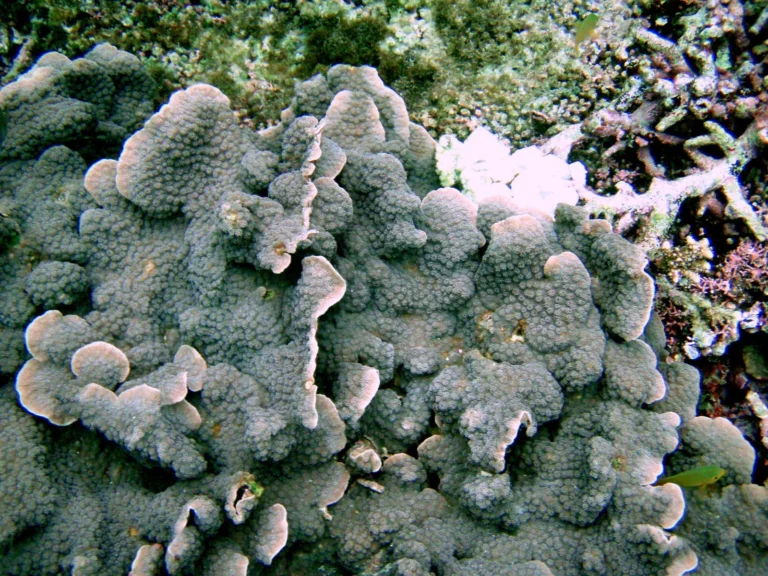Distilled Water Safe to Drink? A Detailed Explanation
Distilled water is safe to drink because it has been purified of most of its soluble and insoluble contaminants.
While distilled water is well-known for its purity, there is often a bit of confusion with regards to how suitable this type of water is, for drinking.
This article addresses the question of safety, based on the following outline;
-What Distilled Water Really Is
-Other Types of Water Which may be Considered
-Why Distilled Water may be Suitable and Safe for Drinking (Advantages/Pros)
-Why Distilled Water may not be Suitable or Safe for Drinking (Disadvantages/Cons)
-Summary: Is Distilled Water Safe to Drink?
What Distilled Water Really Is
Before we can properly determine if distilled water is safe to drink, we must begin by understanding what distilled water is.
Simply stated; distilled water is water which has been purified through the process of distillation. This implies that distilled water is itself a type of purified water; a product of water purification.
By another simple definition; distilled water can be described as water which has been boiled, vaporized, and condensed in (or into) a different vessel.

The practice of distillation is a fairly old method which has been used in the manufacture and refinement of perfumes and alcohol, as well as in the purification of water [8]. Commercially and domestically, distilled water is produced using a machine known as a water distiller.
A water distiller produces distilled water under predetermined and controlled conditions. The contaminants removed from distilled water include; Arsenic, Chlorine, Copper, Lead, Calcium, Potassium, Phosphate, Organic Contaminants (bacteria, algae, viruses, cryptosporidium), Nitrates. Fluoride, Pesticides, Bicarbonate, Mercury, as well as Taste and Smell.
In a nutshell, distilled water is water which;
1). Has been boiled, vaporized, and condensed in another vessel
2). Is free of its mineral, ionic, and biological contaminants
3). Is devoid of its natural electrolytic properties
What is Safe Water?
With regards to drinking, safe water may also be conveniently referred to as ‘Potable’ water.
Potable water is simply water which is safe to drink.
In a more elaborate definition, potable water is water which is safe and suitable for human consumption, which includes its use for drinking and cooking [2]. Currently, the world is plagued by a growing scarcity of potable water. This is a huge challenge, especially when we consider the relatively-fast rate of population growth.
Globally, at least 2 billion people experience difficulty accessing potable water for their daily needs [3]. This includes hundreds of millions who are forced (by a lack of alternatives) to drink untreated water, thereby becoming exposed to waterborne diseases like diarrhea and cholera which are responsible for deaths of a huge percentage of the human population, including adults and children.
There are various standards used to evaluate water in order to determine if it is potable. These standards include the World Health Organization (WHO) and Environmental Protection Agency (EPA) Standards, which are illustrated briefly in the table below;
| Parameters | Units | WHO Standards [10] | EPA Standards [5] |
| Temperature | °C | 12-25 | – |
| pH | – | 6.5-8.5 | 6.5-8.5 |
| Turbidity | NTU | 1.0-5.0 | <5.0 |
| Electric Conductivity (EC) | µs/cm | 400 | 300 |
| Na+ | mg/l | 200 | 100 |
| Ca2+ | mg/l | 100 | – |
| Mg2+ | mg/l | 50 | – |
| K+ | mg/l | 20 | – |
| HCO3- | mg/l | 125-350 | – |
| Cl- | mg/l | 250 | 250 |
| SO4 2- | mg/l | 250 | 250 |
| NO3 | mg/l | 50 | 50 |
| Total Dissolved Solids (TDS) | mg/l | 500-1000 | 500 |
| Total Hardness (TH) | mg/l | 500 | – |
| Fe2+ | mg/l | 0.3 | 0.3 |
| Mn2+ | mg/l | 0.1-0.5 | 0.05 |
| Zn2+ | mg/l | 0.02-3.0 | 5.0 |
| Al3+ | mg/l | 0.2 | 0.05-0 2 |
| Pb2+ | mg/l | 0.01 | 0.015 |
| Cu2+ | mg/l | -2 | 1.0 |
| Cd2+ | mg/l | -0.003 | 0.005 |
| As3+ | mg/l | 0.01 | 0.01 |
| Fl- | mg/l | 1.5 | 2.0 |
| Mn2+ | mg/l | 0.4 | 0.05 |
A number of factors help to evaluate the quality and safety of water. These factors include pH, Turbidity (NTU); Total Hardness; Temperature, and Electric Conductivity (EC).
Other Types of Water Which may be Considered
As part of measures to determine the safety of distilled water for drinking, we must consider the other available options.
Based on quality, types of water include;
1. Boiled Water
2. Filtered Water
3. Tap Water
4. Surface Water
5. Permeate/Product Water
The types of water are compared with distilled water in the following table;
| Criteria | Distilled Water | Boiled Water | Filtered Water | Tap Water (or Ground Water) | Surface Water | Product Water |
| Produced by | Distillation | Boiling | Filtration | Drilling | Precipitation | Reverse Osmosis |
| Contaminants | None | Minerals, Ions, Particulate matter | Ions, Dissolved salts | Ions, Dissolved salts, Particulate matter | Minerals, Ions, Dissolved salts, Particulate matter | Negligible |
| Electrolytic Properties | None | Fair | Fair | Fair | Fair | Low |
| Purity | High | Fair | Fair | Fair | Fair | High |
Why Distilled Water may be Suitable and Safe for Drinking (Advantages/Pros)
1). Distilled Water Dispels Toxins from the Body
Because of the high level of purity of distilled water, it can serve as a tool by which the body can be cleansed [7].
Distilled water is often recommended for patients suffering from cancer and kidney stones. Although there is limited data to validate, it is believed that distilled water helps the body to detox, thereby getting rid of materials that may be harmful.
2). Distilled Water Reduces the Risk of Ingesting Harmful Chemicals
The process of distillation is a purely natural one, as it does not involve the addition of any chemical substances.
This implies that by drinking distilled water, we reduce the risk of ingesting any chemicals that may be unsafe for the body.
3). Disease-Risk Reduction
Based on the fact that distilled water does not contain any (significant amounts of) impurities, it can be looked upon as a good option to reduce the risk of diseases that can arise due to contaminants in water.
4). Eradication of Pathogens and Biological Contaminants
By the application of heat, distillation kills most pathogens which may be present in water. These include viruses and bacteria.
Other biological contaminants and microorganisms are generally left behind when the water is vaporized and condensed into a separate vessel.
Considering that pathogens in water are known to cause may severe ailments, this implies that distilled water provides a safe option and a potential means of avoiding such pathogens.
Why Distilled Water may not be Suitable or Safe for Drinking (Disadvantages/Cons)
1). Lack of Minerals
While tap water may not be the best option with regards to safety for drinking, it is known to contain a number of minerals that are potentially beneficial to the body, such as calcium and magnesium [6].
When water is distilled, however, it tends to lose these minerals. As a result, distilled water is generally lacking in mineralogical content that the body could benefit from.
There have been arguments in favor of distilled water, with respect to this lack. Such arguments assert that water is not a source of any significant amounts of nutrients to the body, as it only provides very small (almost negligible) amounts of minerals.
However, some studies have proceeded to emphasize the importance of minerals in water. Some of these studies claim that the lack of mineral intake from water can weaken bones and increase the risk of fractures [9].
Drinking distilled water has similarly been associated with an increased risk of tooth cavities, since the water may be lacking in fluoride content, which is essential for teeth development. Others have claimed that drinking water without mineralogical content can cause the body to lose some important nutrients, which may be absorbed and removed by the water.
2). Decrease in Rate of Metabolic Activity
Studies have shown that drinking distilled water can cause the rate of metabolism of the body to reduce significantly.
Some ways in which this can be observed, include a reduction of the rate of fat oxidation and thermogenesis [4], both of which are important processes required for the breaking-down of fats in the body.
In many cases, a reduction of the rate of body metabolism can be hazardous, leading to obesity and cardiovascular ailments, among others.
3). Distilled Water Lacks Taste
As a result of its lack of minerals, distilled water usually has a flat taste [1].
While it may go unnoticed, natural water is characterized by its ‘taste’, which comes mainly from the dissolved minerals like calcium that are contained in the water. Because these minerals are not generally available in distilled water, the water may be unpleasant (for drinking) to some people.
4). Poor Hydration and Electrolyte Inadequacy
When the body is dehydrated, it requires not only water, but a combination of rehydration salts to be rejuvenated. These mineral salts are generally contained in tap water and some other kinds of water.
Distilled water, as we have already discussed, does not contain such mineral salts. This means that it cannot serve as an effective means of hydration.
Drinking water which is lacking in minerals has been associated with unfavorable symptoms like muscle cramps, heart disease and fatigue.
Summary: Is Distilled Water Safe to Drink?
Now that we have considered the different factors that determine how safe (or unsafe) distilled water could be, the final decision can be made.
Distilled water is not harmful to the body, which means that it is safe to drink.
However, before choosing distilled water, we must consider some of the factors discussed in this article. These are simplified in the form of questions to be asked, as follows;
1). What is the health status of the individual(s) who are supposed to drink the distilled water?
We have seen that distilled water may be unsuitable for some people, such as obese or overweight individuals, and people suffering from heart diseases and/or high blood pressure.
2). Under what condition(s) is the distilled water to be ingested?
Earlier observations in the course of this article have already implied that distilled water is not the perfect option a quick or urgent hydration is needed. This means that it is not ideal for people under strenuous conditions.
3). What alternative sources of nutrients are available?
Distilled water is best taken where there are alternative sources of nutrients. This includes situations where the individual(s) have access to a balanced diet that provides sufficient amounts of important minerals to the body.
4). What alternatives asides distilled water are available?
The decision to drink distilled water must include a consideration of other usable options.
As has been stared earlier in this article, distilled water is one of various types of purified water. Other options may include boiled water, tap water, permeate water, or filtered water. Choosing the most suitable among this will be helped by considering the level of purity of each type, the cost of accessing each type, and the availability of each type, among other factors.
Distilled water can then be chosen if it scores fairly well, according to individual preferences.
Conclusion
Distilled water is purified water which has been heated, vaporized, and condensed in a separate vessel.
It is generally characterized by a high level of purity, and does not contain any notable amounts of minerals, particulate matter, pathogens, or biological contaminants.
In order for water to be considered safe for drinking, it must not contain significant levels of impurities that are harmful to health. A number of standards exist which can be used to evaluate the quality of water and its suitability for drinking. Such standards include WHO and USEPA among others.
Asides distilled water, other types of water include tap water, boiled water, filtered water and permeate (RO) water.
Some reasons why distilled water may not be safe or suitable for drinking include the lack of minerals, poor electrolytic properties, low capacity for hydration, lack of taste, and link with decrease in metabolic activity rate.
On the other hand, distilled water is highly pure, thereby reducing the risk of diseases associated with ingestion of contaminated water. It is also believed to be suitable for patients of ailments like cancer and kidney stones.
In summary, distilled water is safe to drink since it is not known to pose any serious harm to the body. However, the decision to drink distilled water should only be made after considering factors like health condition, alternative nutrient sources, cost, accessibility, and alternative types of water.
References
1). Blades, N. (2020). “Distilled Water.” Available at: https://www.webmd.com/diet/distilled-water-overview. (Accessed 25 January 2022).
2). Brenniman, G. R. (1999). “Potable water.” Available at: https://doi.org/10.1007/1-4020-4494-1_265. (Accessed 25 January 2022).
3). CDC (2021). “Global Water, Sanitation, & Hygiene (WASH): Access to Clean Water, Sanitation, and Hygiene.” Available at: https://www.cdc.gov/healthywater/global/wash_statistics.html. (Accessed 25 January 2022).
4). Charrière, N.; Miles-Chan, L.; Montani, J. P.; and Dulloo, A. G. (2015). “Water-induced thermogenesis and fat oxidation: a reassessment.” Nutrition & Diabetes; Available at: https://doi.org/10.1038/nutd.2015.41. (Accessed 25 January 2022).
5). EPA (2009). “National Primary Drinking Water Regulation Table.” Available at: https://www.epa.gov/sites/default/files/2016-06/documents/npwdr_complete_table.pdf. (Accessed 24 January 2022).
6). Eske, J. (2019). “What are the health benefits of mineral water?” Available at: https://www.medicalnewstoday.com/articles/324910. (Accessed 25 January 2022).
7). Fletcher, J. (2021). “Is distilled water safe to drink?” Available at: https://www.medicalnewstoday.com/articles/317698. (Accessed 25 January 2022).
8). Liebmann, A. J. (1956). “History of distillation.” J. Chem. Educ., 33, 4, 166. Available at: https://doi.org/10.1021/ed033p166. (Accessed 25 January 2022).
9). Qui, Z.; Tan, Y.; and Shu, W. (2015). “Multi-Generational Drinking of Bottled Low Mineral Water Impairs Bone Quality in Female Rats.” PLoS One; 10(3): e0121995. Available at: https://www.ncbi.nlm.nih.gov/pmc/articles/PMC4372292/. (Accessed 25 January 2022).
10). WHO (2006). “Guidelines for Drinking-water Quality.” Available at: https://www.who.int/water_sanitation_health/dwq/gdwq0506.pdf. (Accessed 24 January 2022).



